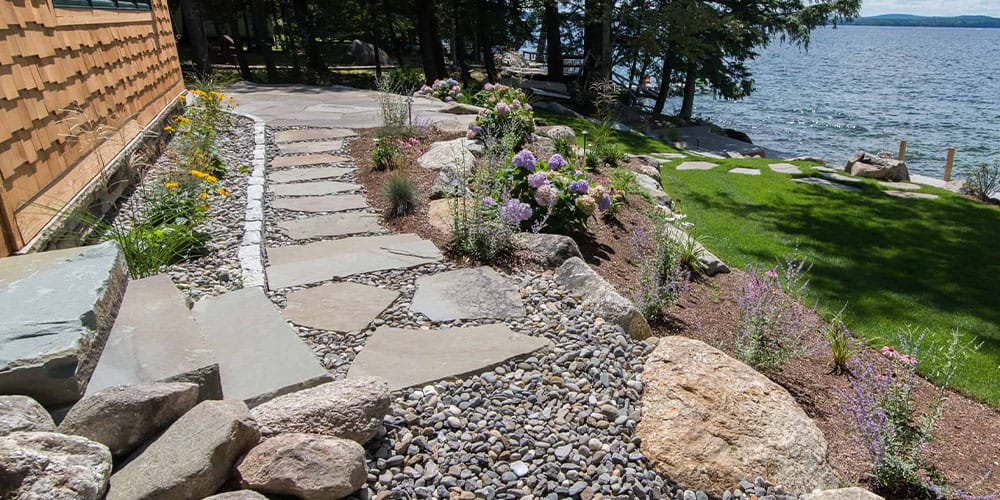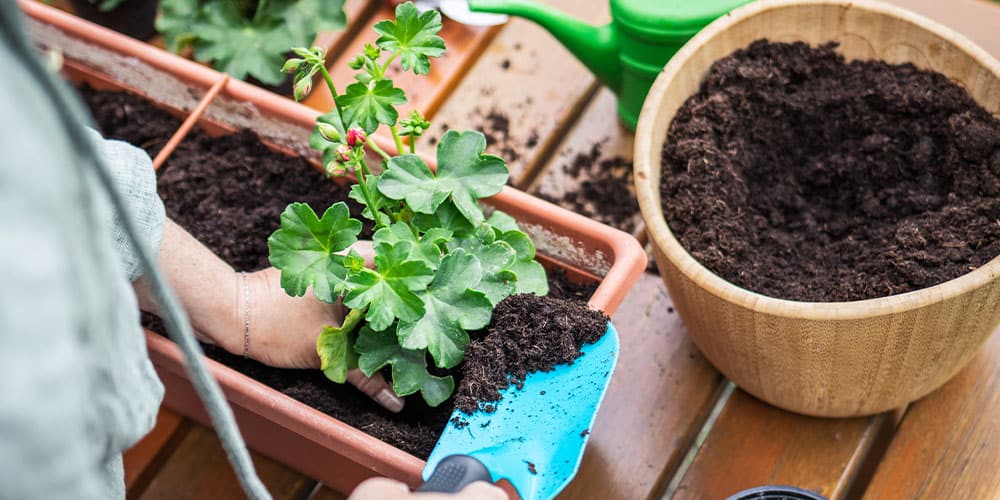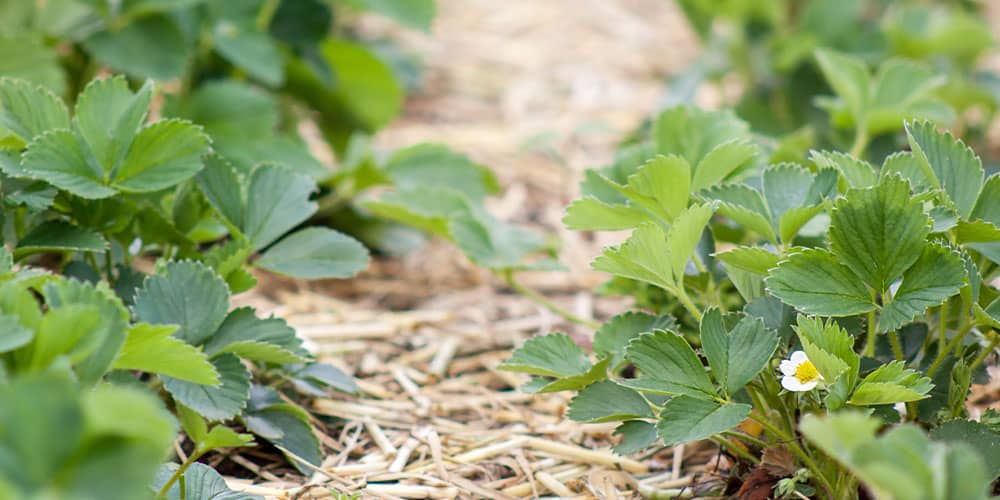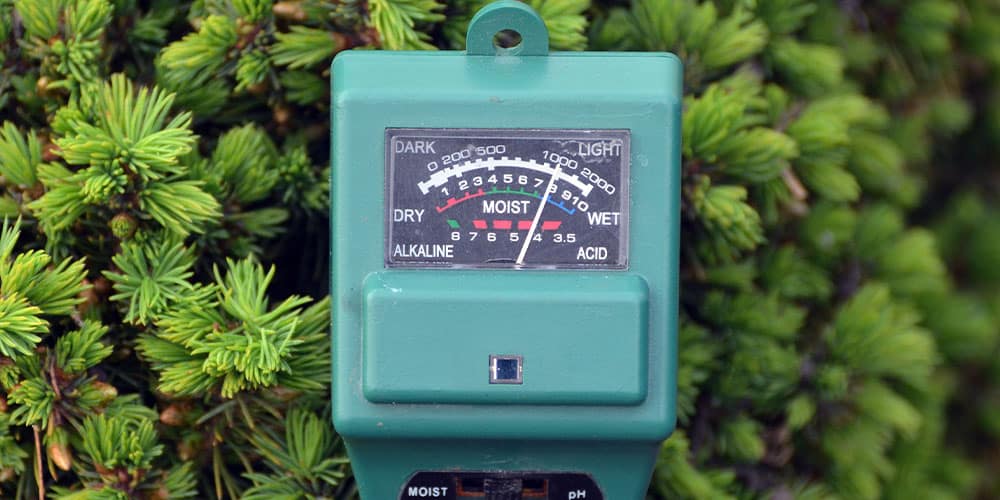As gardeners, we often focus on the beautiful flowers and plants above ground, but what’s going on in the soil is essential to everything else. This living layer of earth is where the plants get their stability, water, and nutrients to grow. It’s worthwhile to understand the different types of growing mediums, learn which ones are best for which plants, and discover ways to amend the soil. Here’s what you need to know!
What Is Topsoil?
Topsoil is the uppermost layer of soil in a garden, lawn, or anywhere in nature where plants are growing. It’s composed of a rich mixture of minerals, organic material from decomposing plants, and billions of microorganisms. Topsoil is essential for biological activity on the planet, as well as a healthy garden.
The topsoil you find in garden centers is harvested from the top 1-2 feet of soil from new construction sites or areas under development. The rocks are screened out, and it’s packaged for sale.
 What is “Garden Soil”?
What is “Garden Soil”?
You’ll also find products labeled “garden soil.” This is topsoil enriched with compost, other organic material, or nutrients to benefit specific garden plants. When building a new garden bed, garden soil makes an excellent growing medium, or you can create your own mixture of topsoil, compost, manure, etc. Garden soil is not the best for potted plants as it’s too dense and retains too much moisture, resulting in root rot.
What is Potting Soil?
Potting soil is a growing medium best suited for potted plants, both indoors and outdoors. It may or may not contain actual “soil” harvested from the earth, depending on the blend. Most blends include a lightweight mixture of organic materials, like shredded bark, peat moss, and sphagnum moss combined with perlite, vermiculite, or pumice for drainage. The mixtures are sterile, meaning they’re free of pathogens or fungi that could infect the plants.
 Different Kinds of Potting Mixes
Different Kinds of Potting Mixes
Besides regular all-purpose potting soil, you’ll find specific potting mixes designed for the needs of specific plants. Cactus and succulent mixes contain a higher ratio of sand to improve drainage and imitate desert conditions. Orchid mixes contain more shredded bark to mimic the habitat where orchids usually grow. You’ll also find seed starting mixes, which are finer, lighter, and don’t have as much nutrient content as a regular potting mix.
How to Amend Your Garden Soil
To amend your garden soil means to add materials to improve nutrients or to fix a problem like poor drainage or unfavorable pH. Generally, if your plants are thriving, you won’t need to worry about amendments other than a yearly addition of compost or manure to replenish nutrients.
If you see your plants are having a problem, and you suspect it’s a soil issue, it’s worthwhile to have your soil tested to find the proper diagnosis. Your local county extension office can provide a soil test for a minimal fee.
 Amending for pH
Amending for pH
Proper soil pH is essential for plants as it allows them to absorb nutrients from the soil. If your soil pH is too acidic, you can add lime to bring it back to neutral. Or, if your soil is too alkaline, you can lower the pH by adding sulfur. This process should be done in stages, not all at once, so your plants can adjust slowly.
Amending Soil Texture
The best soil for most garden plants is called loam, which is neither too dense nor too sandy and is just the right texture for good moisture retention, drainage, and airflow.
A simple way to test texture is to pick up some soil in your hand and squeeze it. You’ve got good loamy soil if it forms a ball before crumbling away. If it doesn’t form a ball, it may be too sandy. If it compacts into a ball and doesn’t crumble, you could be dealing with dense, clay-based soil.
 The best way to amend either clay or sandy soil is to add organic material, like compost or manure. This helps sandy soil retain moisture and improve density. It also loosens up clay-based soil, allowing more room for air and water to flow through. Plus, overall, compost and manure add essential nutrients and microbial activity that improve any soil type.
The best way to amend either clay or sandy soil is to add organic material, like compost or manure. This helps sandy soil retain moisture and improve density. It also loosens up clay-based soil, allowing more room for air and water to flow through. Plus, overall, compost and manure add essential nutrients and microbial activity that improve any soil type.
For more information on the best soil for your plants, drop by our garden center in Moultonborough, and keep in touch through Facebook or Instagram!


 Different Kinds of Potting Mixes
Different Kinds of Potting Mixes  Amending for pH
Amending for pH